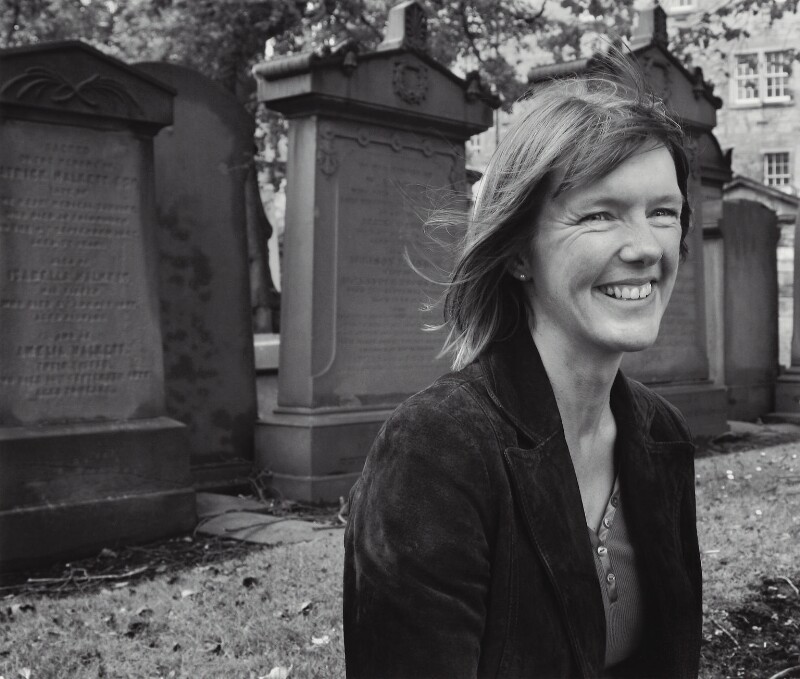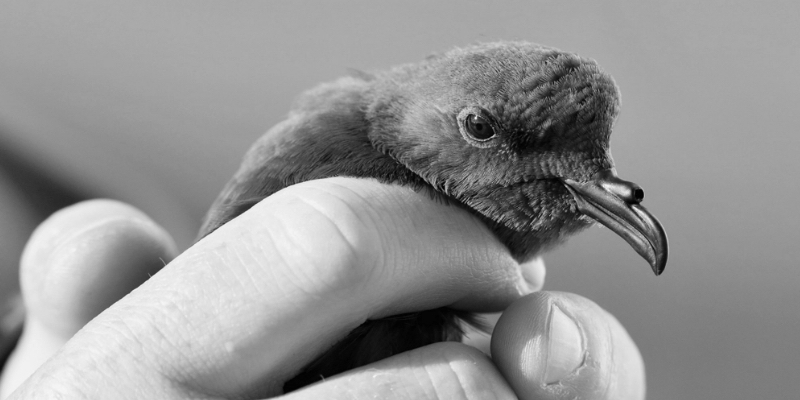
Kathleen Jamie is a poet who writes books about nature, islands, vanished cultures and the people who study these sorts of things. She travels and observes, often as the guest of a scientific study, yet remains remarkably free of agendas, political or otherwise. Here’s an example from her chapter on “the Storm Petrel.” (from Sightlines, 2012)
The account begins: “We found it on Rona, the very day we arrived … “ The “it” in question is the body of a dead bird. A biologist friend recognizes it as a storm petrel–unusual to find a bird like this with an identification ring. Jamie looks it up in a reference book–she is as much a collector of language as she is of natural curiosities—and notes how storm petrels are “essentially pelagic;” “they never occur inland except as storm driven waifs.” Jamie compares this “scientific” description with a description by the poet Richard Murphy, which begins: “Gypsy of the sea/ In winter wambling over scurvy whaleroads/ Jooking in the wake of ships …”

The bird is petite: “you’d think storm petrels too small to jook anywhere at all.” Jamie describes the ring around its foot, and provides a background on the practice of ringing birds in Britain. The ring she’s recovered bears the words: “Inform British Museum.” Jamie does so, filling in an on-line form. She shares with the reader each question and answer, very factual and explicit. Then she muses on what other questions might have been asked, such as “smell of bird?” Her answer: “mysterious, musky, like an unguent.”
Waiting for the British Museum’s response, Jamie muses on the furious 18th century debate on bird migration. Gilbert White is quoted at length. Jamie comments on his unusual words and phrases, beginning with the odd word “hibernaculum”: “Hybernaculum,” Jamie notes, “is his word for the winter quarters a swallow repairs to, but where was this hibernaculum? His other words were interesting too. ‘Embarrassment’ and ‘mortification’ almost suggest that the Enlightenment just then dawning, all that science and discovery, might have been driven not by the will to master and possess nature, but out of chagrin. As human beings, our ignorance was beginning to shame us, because we didn’t know the least things, like where swallows went in winter.”

Jamie receives an answer to her ring inquiry. The bird was ringed on the island of Yell, one of the northernmost Shetland Islands, which she knows well. Jamie gets out her maps and sea charts to trace the journey her storm petrel made. She senses the absurdity of the exercise: “They migrate from Shetland or Rona or their many other breeding places, down to the vast pelagic hibernaculum off Namibia and South Africa. A few come to grief … some bearing a return address. An address! Ludicrous thing for a storm petrel to carry. ‘The Ocean’ would be their address …”
She concludes: “So that’s why I keep the bird’s remains, here in this room, my own hibernaculum—if only for a while … I keep it for the intimacy, and for the petrel smell: fusty, musky, suggestive of a distant island in summer. And I keep it out of sheer respect because, in life, this ounce of a bird had made twenty-four return trips the length of the Atlantic. Twenty-four at least—which is not bad at all, for a waif, wambling